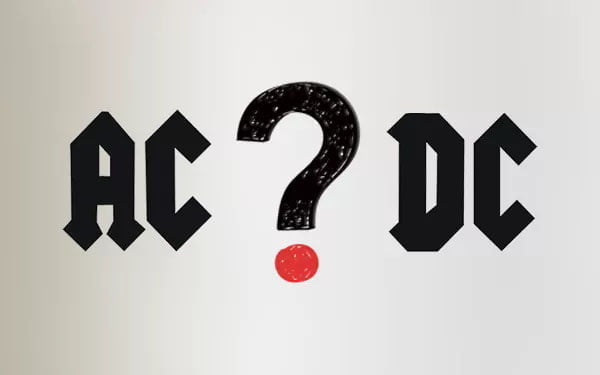If you’ve spent some time searching about how electric systems work in your daily life, you probably heard that there are two forms of electricity—alternating current (AC) and direct current (DC). They are both crucial for any electronics. However, people tend to get confused about their functions. That’s why in this article we will look at what AC and DC are so you can learn the differences between them.
What is AC?
Alternating current means an electric charge will change its direction periodically. It’s also known as a waveform because of the curved line it has in its electric cycles. After humanity discovered how electricity works, there was a need to find more efficient ways to manage larger energy sources. It wasn’t until 1832 when a chemist, Michael Faraday, wrote what it would be AC nowadays.
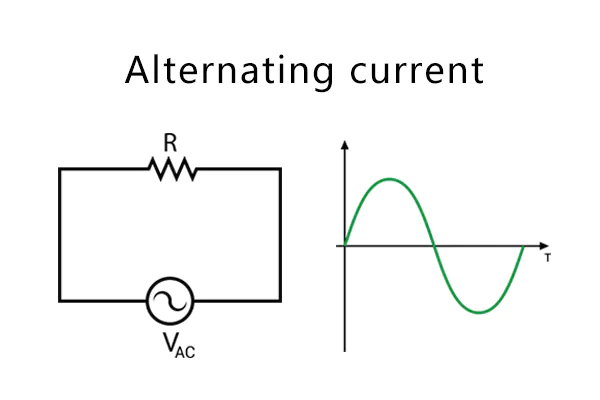
He didn’t know it back then, but he had revolutionized how the electric power in buildings, offices and even grow lights worked.
The concept of using AC has an electrical current that is versatile enough to reverse the direction of its flow.
First, a magnetic field spins a loop of wire which generates an electric current along the wire. Then the wire can spin enough to have different magnetic polarities so the voltage and current change on the wire and its direction.
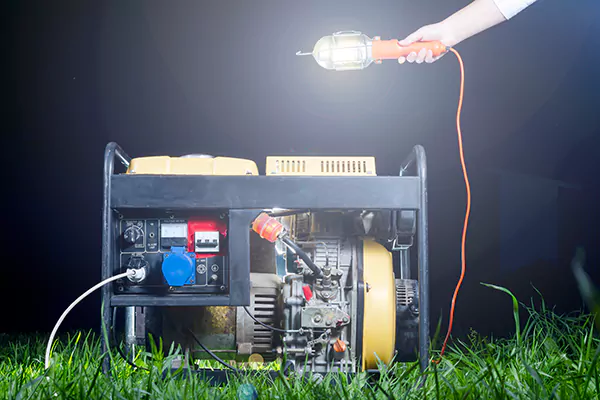
Another interesting fact is that AC has different forms since it’s always alternating, you just need to use an oscilloscope over time to notice it has several waveforms as we mentioned before. They can vary from a square, triangle, and sine, the most common form of AC.
Applications of AC
AC is incredibly popular in the transportation industry since it has fewer energy losses than direct current. AC is very easy to transport so it’s an amazing way to power electric motors or bigger devices such as toasters, refrigerators or dishwashers.
The most notable source of electricity to produce AC is electromechanical generators which have voltages that change in polarity. This is the main reason why AC reverses between positive and negative over time. Alternators are another option to produce AC with the same results.
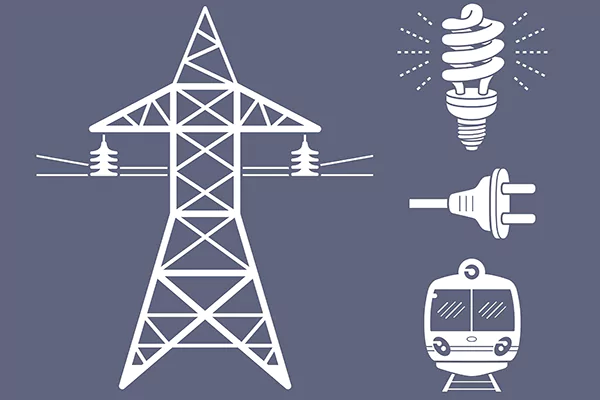
What is DC?
Direct current only moves in one direction. It just needs semiconductors or conductors and insulators to flow within a circuit and its direction will never change periodically. Its steady voltage allows it to be a great option to supply energy to devices and charge batteries. It’s easy to recognize since most of them have plus and minus signs divided by a straight line.
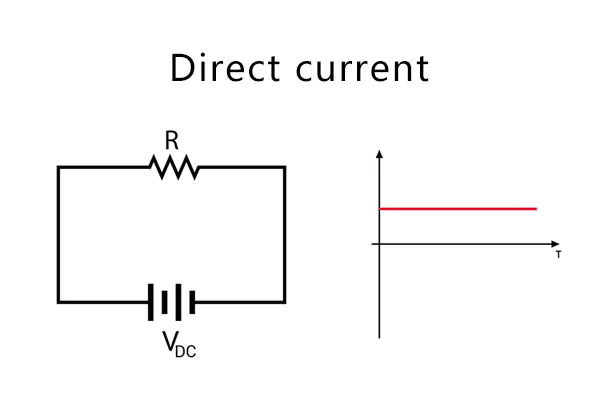
Next time you use a phone battery, flashlight, or even electric vehicles, you’ll know it’s DC that is making them work. Everything that uses an AC adapter even it runs on a battery plugged into a wall or any cable for power needs DC at the end.
Applications for DC
DC power works better for low voltage applications, that’s why thermocouples, cells, and batteries are the primary source of DC nowadays. Aircraft applications and some innovative automotive systems rely on DC as their primary source of power.
Yet, that’s not the only creative application that people use DC for, portable solar systems have had a significant impact in the electric industry since all solar panels produce DC energy. In any case, you just need to use a solar inverter to convert DC to AC in just a few seconds.


Now that you know the general concepts, we can start giving the details about the differences of each current.
Difference between AC and DC
As we mentioned, AC is the type of power current that changes direction regularly within a circuit while DC is able to flow in just one direction.
In case you’re still confused, we’ll go back to electricity basics for a moment. As you may already know, electricity exists when electrons move from atom to atom due to an outside force. This movement is what we call electrical current. You probably remember this from the simple circuits we all had to do in school, including a battery and a bulb. All this process of electrons flowing from a negative terminal to the power source and then going back to a positive terminal is what we know now as the direction of an electric current.
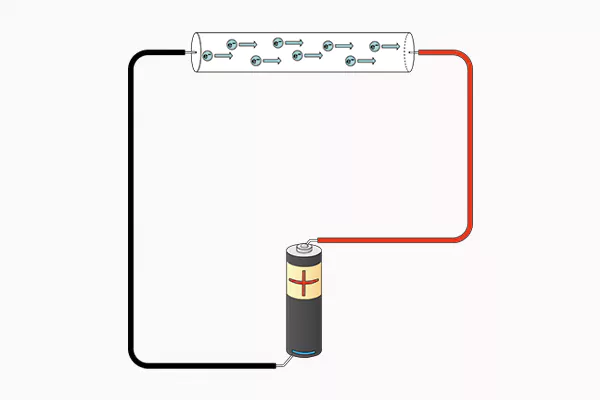
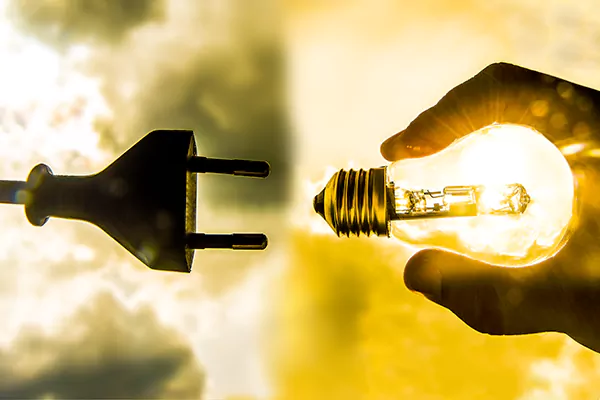
Thankfully, these circuits have evolved enough to choose the direction in which the electrons flow whether it is going forward and backward like AC does or in one steady direction (DC).
With this said, let’s now mention some key points between AC and DC.
- AC can provide more energy for longer distances while DC voltage isn’t able to travel far since it loses energy quickly.
- DC uses a steady magnetism to make the electrons flow along the wire. AC, on the other hand, uses a rotating magnet.
- AC has a frequency of 50 or 60Hz while DC has zero.
Which One is Safer?
Learning about the products you use allows you to know how they operate and teach you the safety procedures you should take. It would help if you didn’t take electricity for granted, let’s take a look at some safety aspects of DC and AC.
- Even though both currents can be dangerous if you don’t know how to handle them, AC is often more dangerous than DC.
- A human body can resist an electric shock from a DC exposure without any negative repercussions. This happens because humans have better impedance to DC power than AC.
- Letting go live part of a DC might be easier than in AC circuits. This means it’s safer to work with DC since they naturally reduce the effect when someone is exposed to electricity.
Keeping electrical systems safe is about prevention. Following basic safety tips is crucial to avoid any accidents, they can go from keeping water away from any electric equipment to avoiding using damaged power cords or products. Using a space heater and installing smoke alarms in your working area is another crucial tip we can give you. You should never doubt scheduling an electrical inspection if you notice there are breaker, outlet, or wiring issues as well as electrical panel damage.
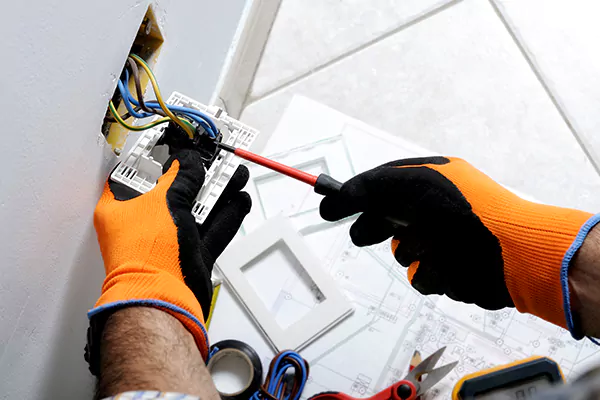
Why do People Prefer AC over DC?
Now that you know almost everything about AC and DC, you might want to know why alternating current tends to get more attention to DC sometimes. The main reason for this is the amount of energy they can carry. AC voltage loses way less energy during the transmission than DC voltage. Moreover, AC power can step up or step down depending on what you need.
Companies can convert AC into DC at wish. Another important key point is that AC is cheaper to produce than DC, it’s also easier to generate.

To Conclude
AC and DC have different directions when the electrons flow in their circuits. The direct current or DC has a single direction while the alternating current can go forward and backward. They both have been handy for our daily lives, from minor electrical devices to larger companies, AC and DC are essential for any construction project that wants to use a reliable source of power.
uPowerTek focuses on manufacturing high-quality AC to DC LED drivers. We also share similar posts regularly, you can always subscribe to our newsletter to make sure you don’t miss any.
-
 120-277Vac Input LED Driver1515 products
120-277Vac Input LED Driver1515 products -
 180-528Vac Input LED Driver1111 products
180-528Vac Input LED Driver1111 products -
 Constant Current LED Driver2929 products
Constant Current LED Driver2929 products -
 Constant Voltage LED Driver1313 products
Constant Voltage LED Driver1313 products

